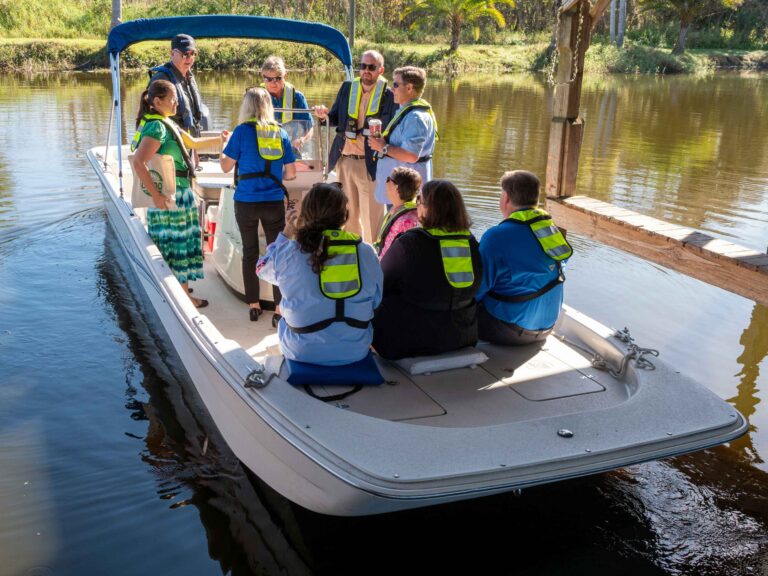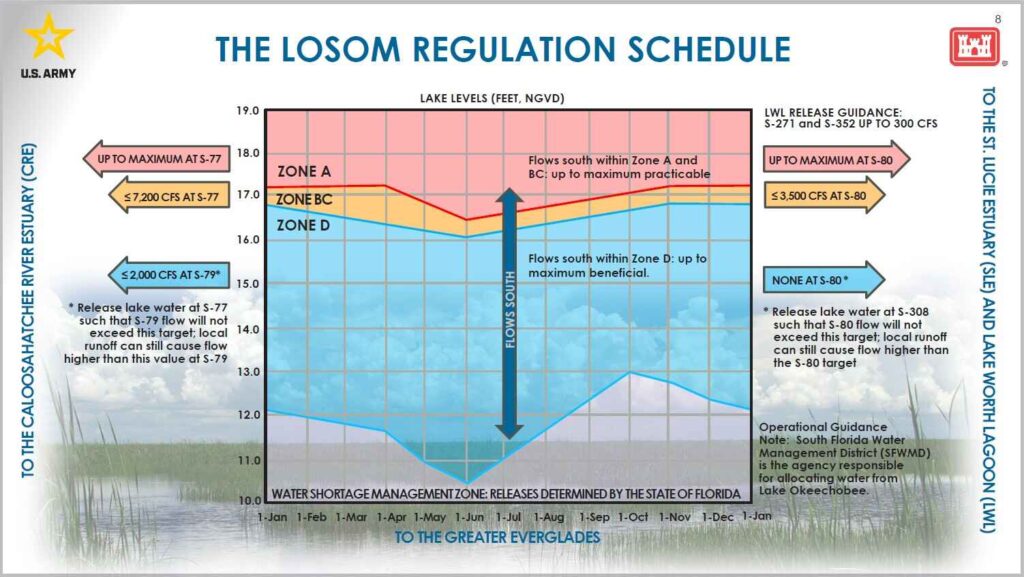
By Ernie Barnett
Over the years, Lake Okeechobee has been an important water resource for Floridians and tourists alike. Anglers and boaters routinely enjoy its recreational benefits. However, the lake plays another important role: providing water for millions of people in the region. That’s why proper management of Lake Okeechobee is critical to so many.
It took nearly a decade for state leaders (including myself), the U.S. Army Corps of Engineers (Corps) and a group of diverse stakeholders to meticulously craft a uniformly endorsed region-wide water resource program for South Florida.

In 2000, Congress passed the Water Resource Development Act of 2000 (WRDA 2000) that approved the Comprehensive Everglades Restoration Plan (CERP) as the framework for modifications and operational changes to the Central and Southern Florida Project (C&SF) that are needed to restore, preserve, and protect the South Florida ecosystem while providing for other water-related needs of the region, including water supply and flood protection. Simply put – Congress and the Florida Legislature mandated that the plan not only restore the Everglades but also improve water supply and flood control throughout the region.
The plan encompasses a suite of projects to restore Florida’s delicate ecosystem, provide flood protection, and secure the water supply for millions of people throughout the region. WRDA 2000 also includes a savings clause that guarantees existing water users would always have the same level of service, or better, for both water supply and flood control, which was in place in the year 2000.
The clause included a requirement that existing legal users of water who rely on C&SF Project for water supply and flood protection be held harmless during the transition to an improved ecosystem. This important clause was instrumental in garnering broad support for this multi-billion-dollar effort. The fundamental principle was that all stakeholders would benefit from CERP, and the projects would be formulated to expand the “water pie” by capturing excess harmful water discharges – store and treat the “new” water and not take water away from existing legal users to accomplish restoration.
This was recognized in the WRDA 2000 Senate Environment and Public Works Committee report, which gave guidance from the bipartisan majority of members of Congress. In the report, the Senate wrote that savings clause is: “designed to preserve the existing legal rights of persons and entities served by the Central and South Florida project and potentially affected by implementation of the Plan.”
While significant effort is being made on restoration, the farming and public water supply stakeholders are concerned that the same level of effort has not been focused on meeting the other water related needs of the region. For example, the C&SF project purpose of water supply was not afforded the same level of attention as other project purposes in the development of a new regulation schedule for Lake Okeechobee.
Modification of the Lake Okeechobee regulation schedule is a major CERP operational component and one of the most effective means to achieve restoration and meet the other water related needs of the region. It is also critically important that any structural and operational changes to the system, including Lake Okeechobee, be evaluated using the correct 2000 baseline to ensure that restoration goes forward without adversely affecting existing water users.
The WRDA 2000 Senate Environment and Public Works Committee report goes onto say, “…that the Secretary shall ensure that the implementation of the Plan, including physical or operational modifications to the C&SF Project, does not cause significant adverse impact on existing legal water users.” Subsection (h)(5)(B) establishes a condition for project implementation that prohibits elimination of existing legal sources of water due to CERP implementation until a new source of water supply of comparable quantity and quality is available to replace the water to be lost.”
Unfortunately, the Corps did not evaluate the effects of the new Lake Okeechobee regulation schedule against the proper baseline (water supply provided in 2000), Furthermore, the Corps has granted themselves historic agency discretion and flexibility in their decision making regarding Lake Okeechobee water levels which will diminished water supply certainty for existing legal water users and the environment and shifts greater control of our region’s water supply to them and away from the State.
The key going forward is to continue to increase water storage throughout the region – by constructing Congressionally authorized large scale water reservoirs, especially north of Lake Okeechobee, and through innovated aquifer storage and recovery systems, both of which can capture, store, and treat excess water during the rainy season and then use that stored water for the environment and societal needs during drier times. Each of these projects and operational changes should be developed and analyzed using the proper 2000 baseline and not the current Lake regulation schedule that provides less water supply reliability. Evaluating the performance of projects using a regulation schedule that does not provide the same level of water supply that was in place in 2000 is contrary to the Congressional mandate to protect the water supply for millions of people in South Florida.
I strongly believe that there are solutions that result in a restored Everglades and Lake Okeechobee that also improve the region’s other water related needs, such as flood control and water supply. The Corps should be restoring Florida’s water supply, not diminishing it permanently. Ignoring the requirements of WRDA 2000 to protect water supply for both the environment and millions of people living in South Florida should cause anyone who uses the lake for any reason to be concerned.
I sure am, because South Florida will be on an unsustainable path. Natural resources, not capable of a quick recovery, will be placed in jeopardy and the water supply will not meet the needs of our communities, businesses, and agriculture in the region.
Ernie Barnett is the Executive Director of the Florida Land Council and a water expert with 40 years of experience.
























